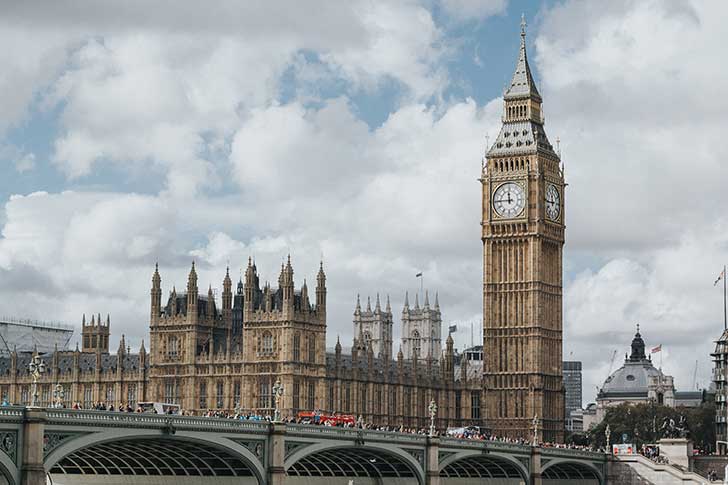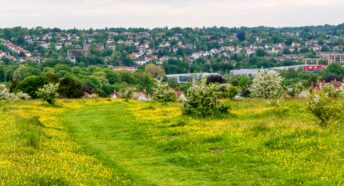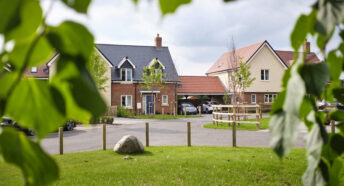What is a planning white paper, and why does it matter?
If you follow what we at CPRE talk about, you’ll have seen us say a lot about planning and a ‘white paper’. But what is a ‘white paper’, and what do you need to know about the planning white paper that’s become so important?
Read on to learn the importance of white papers to making new policies and laws, what the planning white paper means for the countryside – and CPRE’s concerns and proposals for the future.
First things first: what actually is a ‘white paper’?
When the government wants to change current policy and propose a new set of processes, there are steps that it has to take to get there. These new ideas can come from a range of sources – from ministers, backbench MPs, committees and external stakeholders like charities (that’s us) and thinktanks.
The initial stage of thinking is shared with the world as a ‘green paper’. A green paper is when the thinking is fresh, formative and set out as a discussion document to let parties inside and outside of parliament know that the government is considering changing or creating policy.

Once these proposals have had some more formal thinking, the government will prepare a white paper.
This is a more official policy document setting out initial proposals for new or developed policy. It’s a longer document than the Green Paper and sometimes includes a draft version of the future Bill (a document ready to be voted on in parliament to be made official).
Who gets a say in a white paper?
At this stage, a consultation process is opened, inviting all interested parties to comment on the proposals.
At CPRE, we often work on detailed submissions to proposals at this stage, using our research and expertise to advocate for what will work best for the countryside and for people (you can see some examples of times we’ve submitted consultation responses in our resources section – but be warned, they can be quite technical as we answer detailed and very specific questions from the government!).
Comments and suggestions are then analysed by the government and the leading government department, and a formal response to the white paper consultation is published.

Oh, and the weird colour system? It’s called a white paper now, instead of Green because white indicates that it’s for public access in the colour coding system they use in parliament.
What’s the planning white paper?
So now you know everything you never knew you needed to know about white and green papers, onto why we at CPRE are so involved with one specific white paper – the one about planning rules.
These are the laws that govern what gets built and where in this country, and you can read more about these in our planning explainer, which breaks down these often confusing and technical rules.
The government published the planning white paper, called ‘Planning for the Future’ in August 2020. It was open for consultation until the end of October 2020, and we at CPRE responded to that consultation with our thoughts about what had been proposed.

In the Queen’s State Opening of Parliament in January 2021, she stated that the government aimed to ‘modernise the planning system’ in the coming year. The next thing that’ll happen is that the government will respond to the learnings it gathered from the consultation, and this hasn’t happened yet.
It’s fair to say, with the end of the planning white paper consultation becoming a distant memory, we at CPRE are eager to see a consultation response and a draft bill on which we can work with MPs to discuss and improve.
What does the planning white paper cover?
The white paper proposes a whole suite of changes to the planning system.
The government said that its focus was to remove red tape and increase the rate of building new homes – which sounds promising, as we know that the country badly needs more homes, and primarily ones that are truly affordable.
For how we got into the situation of desperately needing more housing, explore our explainer breaking down why there’s a housing crisis (and it might not be for the reasons you expect…).

The planning system as it stands was described as ‘outdated and ineffective’, and the paper proclaimed the new proposals were for a ‘radical reform unlike anything seen since the Second World War’.
The stated aims include streamlining the planning process, making more elements of the system available digitally, focusing on building design and sustainability, changing the way that building developers have to contribute, ensuring that more land is available for housing and (takes breath) supporting town and city regeneration.
As you can tell, this paper is a big deal.
What does CPRE think about the current planning white paper proposals?
We’ve never said that the current rules around planning are perfect – far from it! And we’re passionate about making sure that the way planning works in this country puts people front and centre and ensures the right housing that gives communities what they badly need – the right homes, in the right places.
For us, the planning white paper proposals are worrying for a number of reasons. We’re particularly concerned by the lack of focus on affordable housing and on making sure that people get the right kinds of homes.
And we’re not convinced that the proposed approach will lead to a faster, more democratic system that listens to local voices.

The plans that the paper lays out for areas that are to be designated ‘growth’, ‘renewal’ and ‘protected’ risk undermining the current protections in place in the plans that have already been made locally (known as local plans and neighbourhood plans).
These protections have been hard-won by communities raising their voices in opposition to the wrong kinds of building and the destruction of much-loved green spaces.
By designating an area for ‘growth’ and overruling current plans, there’s more risk that Green Belt land (the strips of green space that surround our built-up areas) and green fields will be built on and less chance for community engagement, so local people can express what they want to see happen.
At CPRE, we passionately believe that planning works best when people have a say, and so cutting out community voices in return for faster development isn’t a trade-off we’re on board with. Reforming our planning system should be a moment to increase local democracy, not cut it, and make as many people as possible feel more connected to where they live.

The climate issue
We’re also disappointed that the paper falls short on doing more to address climate change. The planning system could be used to proactively tackle some climate change issues and help the country meet its carbon-cutting targets.

There’s a chance here for new housing to move away from creating car-dependent communities, focus on brownfield-first development (we have an explainer about what we mean by this) and champion building zero carbon homes. The white paper misses the mark on ambition for tackling climate change, instead pushing requirements for net-zero building further back.
We think this is a huge wasted opportunity – especially because climate change is the biggest existential threat to the countryside that we care about and campaign for.
The white paper and affordable housing
In the paper, the government say they want to see ‘people and families own their own beautiful, affordable, green and safe homes’ – which sounds great, right?
But it makes no acknowledgment of the stark reality that affordable homes in England are hard to come by, especially in rural areas or where there are lots of holiday homes. A lack of affordable housing disproportionately affects marginalised groups, as demonstrated by Commonweal Housing’s ‘Locked Out’ report.
Affordable housing in rural areas is a necessity if we are to help countryside communities thrive. We’re committed to ensuring that housing and green spaces in rural England are accessible for everyone – and we’re worried that the White Paper doesn’t help make this a reality.
What would CPRE like to see?
We believe that the planning system is a toolbox for achieving better – for people, nature and the economy – while making sure that more badly-needed homes are built to end the housing crisis. Right now, we don’t think that the White Paper has the right balance to make this happen.

We’ve made a lot of headway in flagging up people’s concerns around the proposals, and we’re urging the government to envision a planning system that tackles the most pressing issues of our times.
So we’re working with almost 20 other organisations who share our passion, including Friends of the Earth, Cycling UK and the Town and Country Planning Association and have created a Joint vision for planning in response to the white paper.
This is a solution-focused, collective vision laying out what a planning system fit for the 21st century will look like – and provides a gold standard for the government to achieve for the planning system. We don’t just highlight the importance of elements such as community engagement and access to nature, but spell out how these principles can actually be made to happen.
For example, the planning system could help tackle the appalling drop in the biodiversity of our nature and wildlife by identifying special ‘nature recovery areas’, or ensuring local people’s voices are heard by making it legally guaranteed that they’ll get a say.
We think it’s pretty neat, and that the government would do well to take note of it and improve the White Paper.
What can you do to support CPRE promote a planning system that protects, promotes and enhances the countryside?
Our work is made possible by our amazing supporters, and you can be a part of it too! We appreciate all gifts, whether legacies that people generously leave for us in their wills, regular donors and members (who can join from as little as £3 a month) and fundraising done for us.
It all helps us to keep working for a countryside for all of us. Thank you for being a part of the movement.









